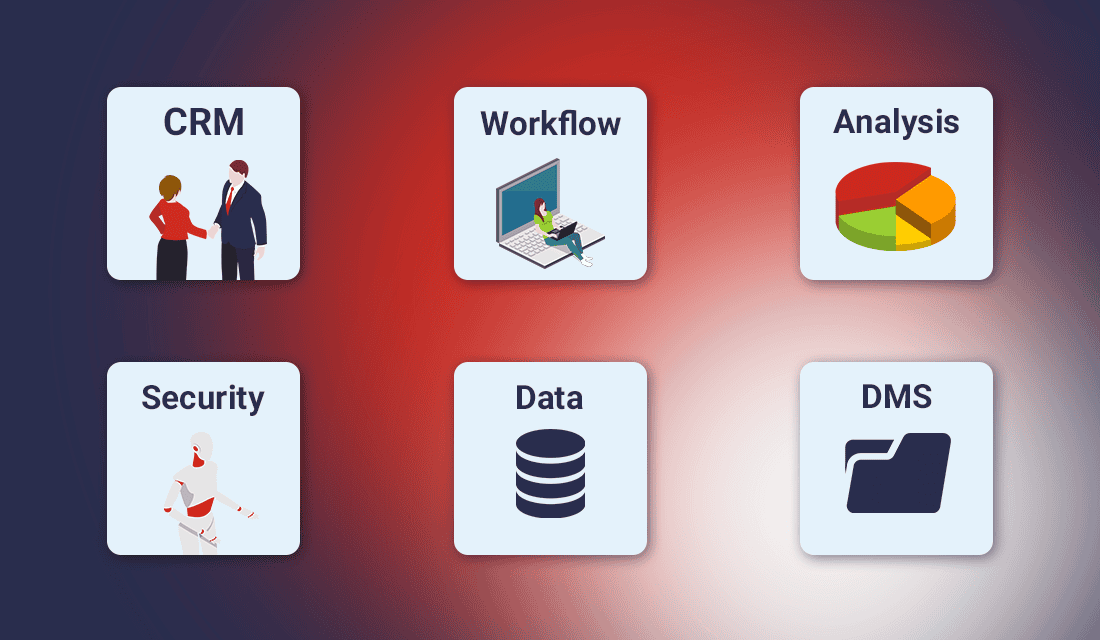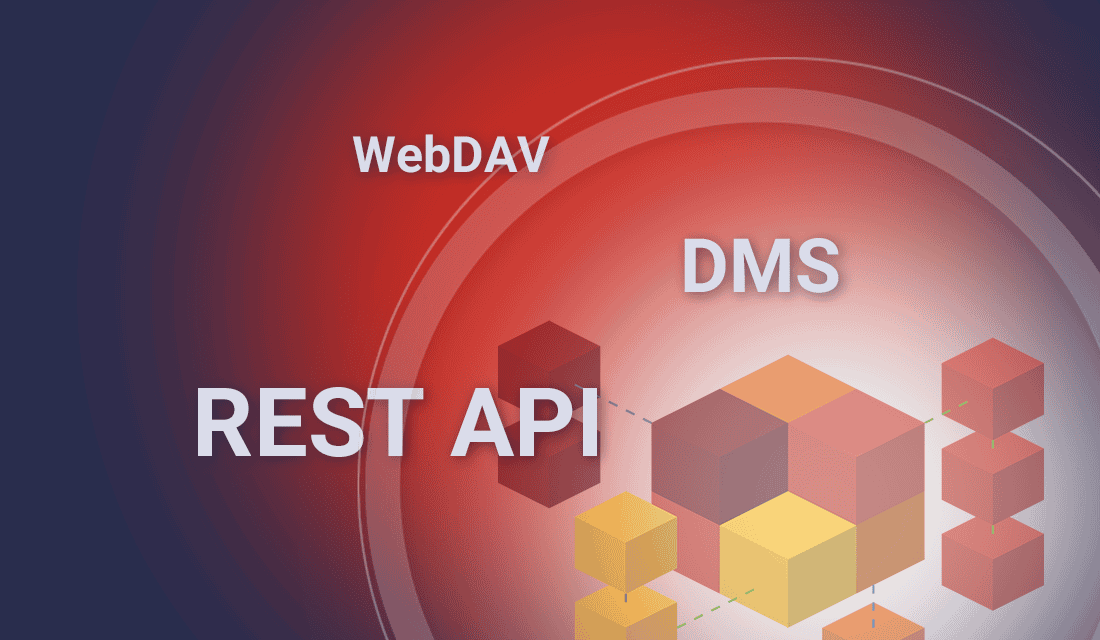
Digitalization can improve efficiency, transparency and profitability in real estate management, just as services for landlords and tenants. How well is a company already set up for this? Some core areas in an office organization give a good indication of this.
1. Communication and Workflow
While email and telephone still dominate in most cases, these channels are often already directly integrated into customer relationship management (CRM) systems. Supplemented by chat or a messaging and collaboration platform such as Microsoft Teams or Slack, traditional email is expected to be replaced gradually – at least internally within the organization. Social media such as WhatsApp or LinkedIn are already part of the communication world in offices today, including automated chatbot-colleagues who can answer simple questions and, if configured accordingly, can access documents and information. Any integration of these different channels brings huge benefits for efficiency in the workplace.
2. Analyses and Application Landscape
The purchase or sale of assets, listings and letting – many core processes in the real estate industry have often been carried out manually up to now. The challenge is to make these processes simpler, more user-friendly and more efficient. The classic data transfer format used by property management companies is Excel. Those who are already one step ahead automatically import information on operating costs, rental income and other budget items into their property management system via data interfaces. If the processes for transferring property data are digitalized and perhaps also automated, there is nothing to stop you from enhancing efficiency in the area of analysis. With reporting directly from Excel or your own analysis software that accesses the data warehouse, regular reports can be created and perhaps even automatically made available to customers or management.
3. A Secure Workspace
Digitalization in the real estate industry also means implementing the state of the art in security issues.
- Are critical data and documents sent openly by email?
- Are they encrypted?
- Is there an alternative and secure data transfer?
The issue of logins and passwords for applications is of crucial importance for the security of user accounts and the integrity of data. The “single sign-on” concept provides standardized login data and secure role and rights management for access to multiple applications. In the background, professional password management is important to ensure the use of strong passwords and to keep a clear overview of onboarding and the deletion of user accounts when an employee leaves the company. In recent years, many companies have established the option for employees to access their workplace remotely (“remote access”). Working from home increases job quality and saves time – access via a VPN (Virtual Private Network) must be just as secure.
4. Data Flow and Documents
Do you still receive your documents by email? Do you use shared folders or solutions like Sharepoint or is there a document management solution in the company? A central system such as a data warehouse or a document management solution (DMS) is a key pillar of efficient processes. The efficient handling of documents in particular, the scanning of paper mail, the automated forwarding of mail or the transfer of the content of digital documents to a central repository, is enormously helpful in day-to-day business. For the best possible collaboration and overview at a document level, shared folders with appropriate rights and roles for different users are ideal. Instead of sending documents to the circle for additions or edits, several users have access to a current version and can track changes that are visible in the document history. Another advantage of this concept is that formatting often automatically converges to a standard if appropriate templates are provided.
Of course, the efficiency gains from a central data platform also depend on the size of the company. Standardized templates and a transparent database are often found only in companies with dedicated controlling roles in the team. In smaller companies, there may be only a single specialist responsible for data management and evaluations. This can result in a plethora of lists and statements that make it difficult to obtain an overview of the current status per se. Who corrected the data and when was the change made? Bundling knowledge with a single person can lead to a company risk. If a colleague leaves the company, their takeover sometimes starts from scratch. With ten or twenty properties, the effort for new tenant lists and the overview of any arrears and outstanding items is certainly possible. However, if the portfolio to be managed is larger, it would be necessary to go beyond Excel and continue to use it in a self-explanatory manner.
The basis of stability in asset management depends on the setup of data communication – from companies that generate information to a central recipient – usually the company that owns the property. This setup is by no means just technical, not only with the data interfaces. Communication processes must also function here: Who needs to be informed when software is updated? When and to whom should a change or personnel in an organisation be communicated? This is important if data is also transferred manually, at least in part, and new colleagues may first have to familiarize themselves with the system. Trivial processes, such as the creation or renaming of cost fields such as “elevator 1”, “elevator 2” – if data fields are changed on the rental or operating costs side, this has an impact on the reports in the administration. And in the best-case scenario, everyone knows about it.
In more and more companies, the role of a data steward is to keep an eye on data flow and quality assurance, administer the central systems and relieve the burden on asset management.
Important Interfaces

Document management in the real estate sector typically also includes rental agreements, floor plans and plans of facilities and individual rental properties, photos and descriptions – it is a bundle of document formats that are usually also sent by email. Even if a folder structure and shared folders can be used to a certain extent, email is not a suitable medium for complete listings, overviews of property features and tracking.
“Which property has the highest operating costs relative to income?” “How long did it take from the time of a complaint until a repair was completed?” Document management solutions are available on the open market that provide answers to such questions. More important than the manufacturer’s name, when choosing a solution, it is more about the possibility of networking with other applications. Does the system support WebDAV? With the cross-operating system standard for sharing, copying and moving documents, even in the cloud, data islands are history – data can also flow to other applications. The same applies to the REST API (it stands for “Application Programmable Interface”), a set of rules for applications in distributed systems and web services. If the REST API supports full-text search, scanning and versioning, it is suitable for the automated transfer of data and also for accessing data that is stored in different systems. Templates and standardization of folder structures are significantly simplified with the API.
With the technical interfaces, the connection to the e-mail program is also child’s play. An example of the integration of a DMS with the email client: “Extract the attachment of an email with the name x and the keyword y in the email and store it in drive folder z.” If you want to be particularly smart, you can assign “tags” to your properties and rental objects. As soon as these codes appear on invoices or real estate exposés, these documents are automatically assigned to the project.
The Tools for Document Management
Occasionally, manufacturers of document management systems specialize in the real estate sector by mapping typical business processes and data structures in the software. However, management companies use standard solutions that can be found in other business sectors. It is the openness for integration with other systems that counts.